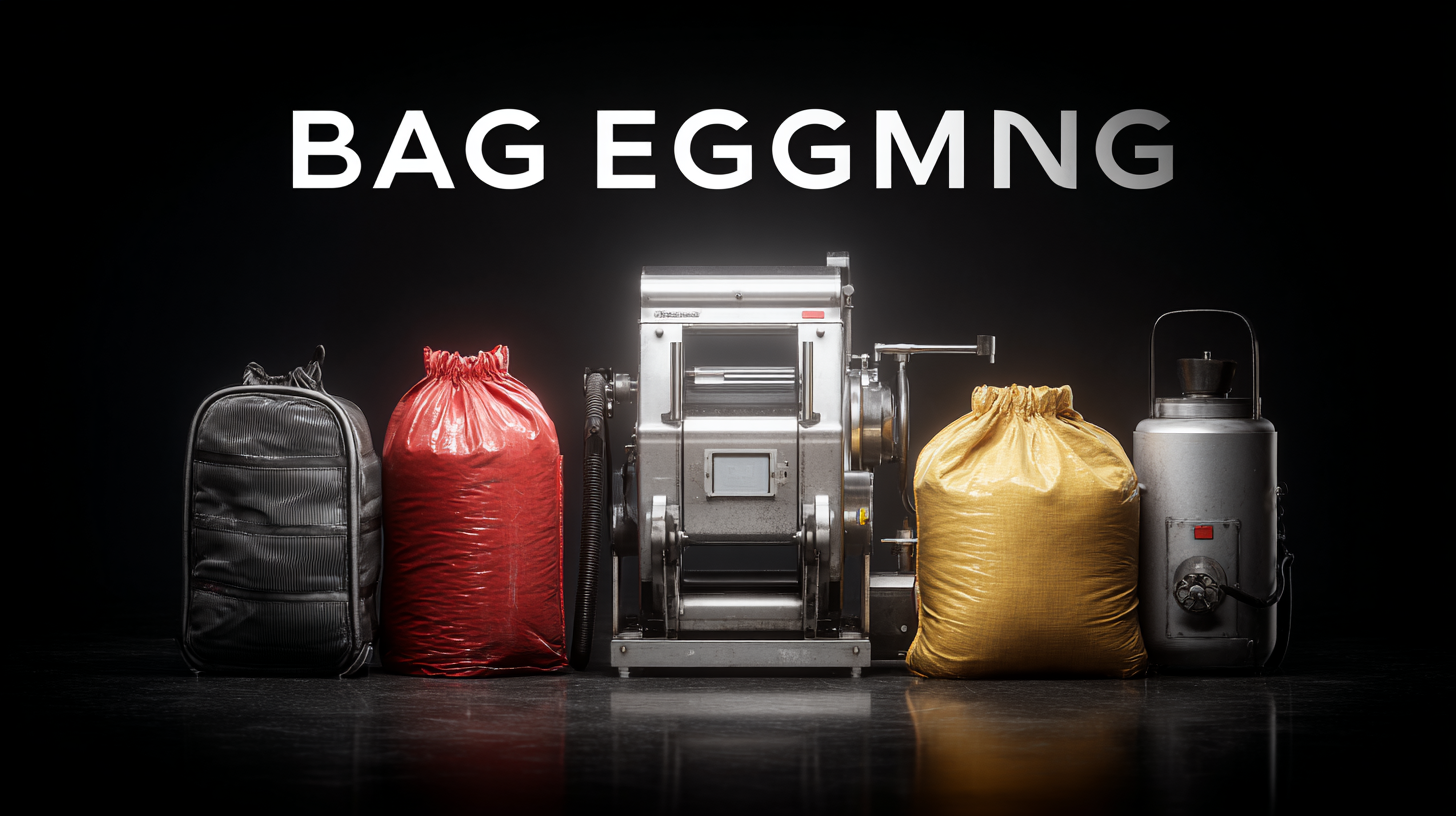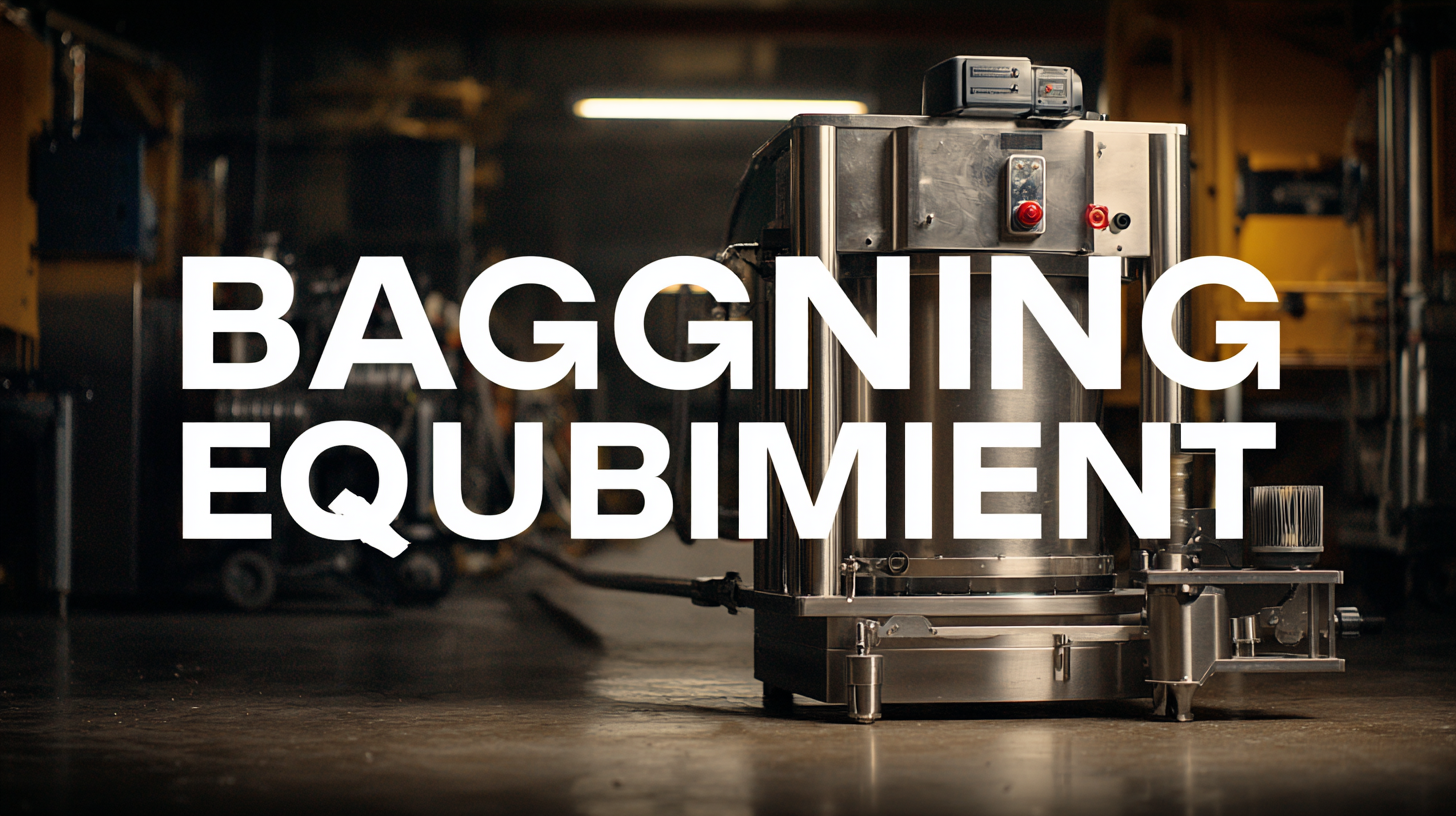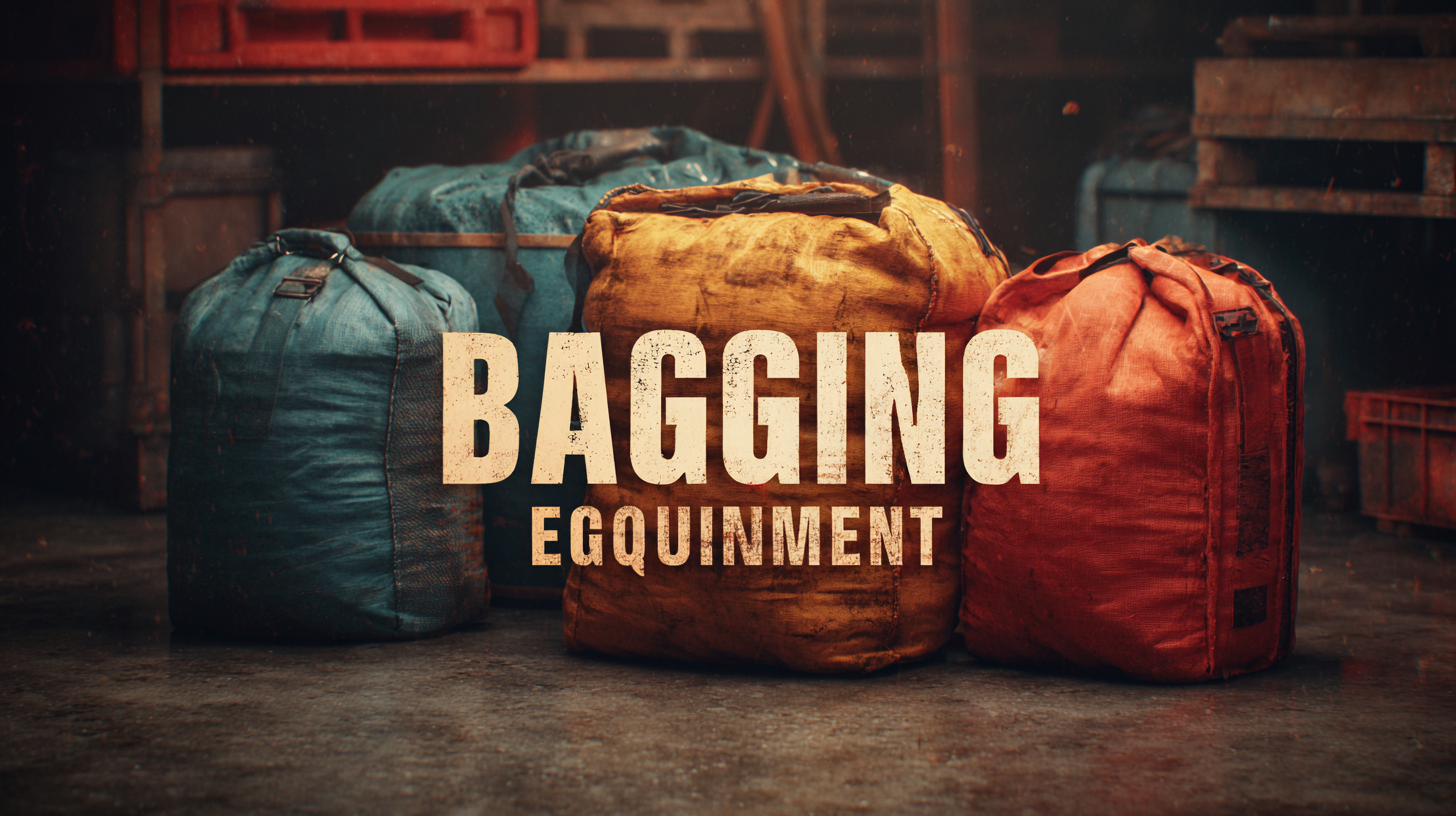ProMach is your partner from start to finish. Our product brands are grouped into distinct business lines that make the most sense to our customers, covering every function of the production line: Filling, Bottling & Capping, Decorative Labeling, Flexibles & Trays, Pharma, Handling & Sterilizing, Labeling & Coding, Robotics & End of Line, and Systems & Integration.
learn moreExploring the Unique Features and Applications of Best Bagging Equipment for Diverse Products
In today's fast-paced industrial landscape, the significance of efficient packaging cannot be overstated, and Bagging Equipment stands at the forefront of this necessity. Designed to cater to a diverse range of products—from agricultural goods to pharmaceutical items— bagging solutions are essential for enhancing productivity and maintaining product integrity. This blog will delve into the unique features of various bagging equipment, illustrating how their innovative designs and functionalities cater to specific industry requirements. By exploring real-world applications and industry case studies, we’ll uncover the ways in which optimal bagging solutions streamline operations, reduce waste, and ultimately drive business success. Whether you are in search of the right equipment for your packaging needs or simply wish to understand the transformative potential of advanced bagging technologies, this exploration will provide valuable insights and actionable information.

Understanding the Different Types of Bagging Equipment Available in the Market
When it comes to packaging various products, the type of bagging equipment used can significantly affect efficiency and product integrity. Primarily, there are several distinct types of bagging equipment available in the market, each designed to cater to specific needs. For example, vertical form-fill-seal (VFFS) machines are popular in the food and beverage industry due to their ability to package products quickly while maintaining freshness. These machines form bags from a roll of film, fill them with products, and seal them—all in one seamless operation.
Another essential type is the horizontal form-fill-seal (HFFS) machine, which is commonly used for larger items and bulk packaging. Unlike VFFS machines, HFFS equipment handles products that require wider openings and greater product flow. Additionally, there are manual and semi-automatic bagging systems that provide flexibility for smaller operations or businesses that require custom packaging solutions. Each type of bagging equipment offers unique features and capabilities, enabling businesses to choose the best option based on their product specifications and production demands.
Exploring the Unique Features and Applications of Best Bagging Equipment for Diverse Products
| Bagging Equipment Type | Application | Key Features | Product Types | Average Price Range |
|---|---|---|---|---|
| Manual Bagging Machine | Small to Medium Scale Production | Compact, Easy to Operate | Seeds, Snacks, Powders | $500 - $1,500 |
| Semi-Automatic Bagging Machine | Mid Scale Production | Increased Efficiency, Versatile | Grains, Sugar, Flour | $2,000 - $5,000 |
| Fully Automatic Bagging Machine | Large Scale Production | High Speed, Minimal Labor | Pet Food, Chemicals, Aggregates | $10,000 - $50,000 |
| Vertical Form Fill Seal (VFFS) | Flexible Packing | Space Efficient, Customizable | Snacks, Pet Treats, Detergents | $15,000 - $70,000 |
| Bulk Bagging System | Heavy Materials | Robust, High Capacity | Sand, Gravel, Wood Pellets | $20,000 - $100,000 |
Key Features to Look for When Selecting Bagging Equipment for Various Products
When selecting bagging equipment for various products, it is essential to consider features that enhance efficiency and adaptability. One key feature is the versatility of the machine. Ensure that it can handle a range of product sizes and materials without the need for frequent adjustments. Additionally, consider the speed and accuracy of the equipment—it's crucial for maintaining productivity levels while ensuring that each bag is filled and sealed correctly.
Another important aspect is the machine's ease of use and maintenance. A user-friendly interface can facilitate quick operation, reducing training time for new staff. Regular maintenance should be straightforward to minimize downtime and extend the machine's lifespan. Furthermore, incorporating advanced technologies, such as automated feature selection in machine learning, can improve diagnostics and optimize performance.
**Tips:** Look for machines with customizable settings that allow you to adapt to different products efficiently. Additionally, always check for after-sales support and warranty programs, which can provide peace of mind and assistance in case of operational issues. Lastly, consider energy-efficient options that not only reduce costs but also demonstrate a commitment to sustainability.

Applications of Bagging Equipment in Different Industries and Their Benefits
Bagging equipment plays a crucial role in various industries, from food production to pharmaceuticals. In the food sector, automated bagging machines are essential for ensuring speed and efficiency in packaging items such as grains, snacks, and frozen foods. These machines not only improve productivity but also enhance product safety by minimizing human contact and reducing contamination risks. Additionally, they can be customized to handle different bag sizes and materials, catering to the diverse needs of food manufacturers.
In the pharmaceutical industry, precise and reliable bagging equipment is vital for packaging medications and medical supplies. The accuracy of these machines ensures that each product is correctly dosed and meets regulatory standards. This is particularly important for items like powder formulations or bulk ingredients, where measuring errors can have significant consequences. Moreover, the use of specialized bagging systems can facilitate batch tracking and improve inventory management, providing added efficiency and compliance in an industry where precision is paramount. As businesses continue to innovate and expand, investing in advanced bagging solutions will remain a key strategy for optimizing operations across various sectors.
Maintenance Tips to Ensure Longevity and Performance of Your Bagging Equipment
Maintaining bagging equipment is crucial for ensuring its longevity and optimal performance, especially when handling a variety of products across different industries. Regular maintenance begins with a thorough inspection of the machinery to identify any signs of wear or damage. This includes checking the conveyor belts, sealing mechanisms, and electronics for any irregularities. A proactive approach will help mitigate downtime and ensure that the equipment operates at peak efficiency.
Another important aspect of maintenance is keeping the bagging equipment clean. Dust and debris can build up over time, hindering performance and product quality. Implementing a regular cleaning schedule not only improves hygiene but also allows for better visibility during inspections. Furthermore, lubricating moving parts as per the manufacturer's guidelines helps reduce friction and wear, enhancing the overall lifespan of the machinery. By prioritizing these maintenance tips, businesses can optimize their bagging processes and maintain consistent product output.

Innovative Technologies Enhancing the Efficiency of Modern Bagging Solutions
In the ever-evolving landscape of packaging, innovative technologies play a pivotal role in enhancing the efficiency of modern bagging solutions.
According to a recent report by Smithers Pira, the global packaging market is projected to reach $1 trillion by 2024, with bagging solutions contributing significantly to this growth. Advanced automation systems, including high-speed bagging machines equipped with smart sensors and AI, are revolutionizing the industry by optimizing production lines and reducing labor costs.
Furthermore, the integration of IoT technologies is enabling real-time monitoring of bagging equipment, allowing manufacturers to identify inefficiencies and maintain optimal performance. A study from Mordor Intelligence highlights that the adoption of automated bagging systems can increase packing speed by up to 30%, ultimately leading to a quicker turnaround time. Additionally, features such as adjustable fill weights and customizable bag sizes cater to diverse product requirements, making these solutions versatile across various sectors, from food and beverage to pharmaceuticals. As the demand for efficiency and flexibility continues to rise, the role of innovative technologies in bagging equipment becomes increasingly crucial for businesses aiming to stay competitive in the marketplace.